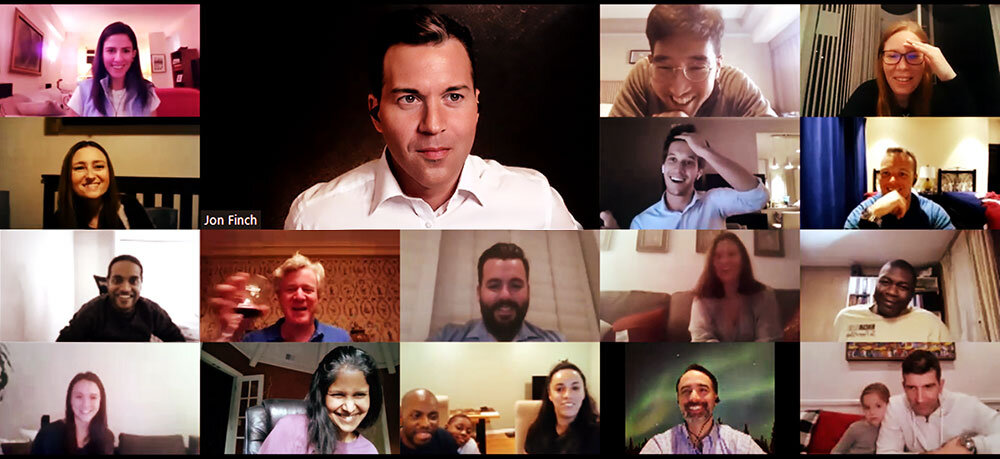In the world of theatrical magic, misdirection can be described as a form of deception in which the performer is able to draw attention of the audience to one item to distract them from something else. The ability to control attention from the audience is the goal of every theater, and the foremost prerequisite for all magic shows. If the magic is of a “pocket trick” variety or a large stage production, misdirection is the central secret. The term is used to describe either the result (the observer`s focus on an unimportant object) or the sleight-of-hands and patter (the magician`s voice) which creates the illusion.
It is difficult to say who first coined the phrase, however the first reference to misdirection can be found in the writings of an influential author and performer named Nevil Maskelyne: Admittedly, it is a method of distracting the senses of the audience to hide from being aware of certain information in which confidentiality is essential. Around the same time, magicianand artist Tarbell noted, Nearly all the art of sleight-of-hand depends on this art of misdirection.
A few magicians who have studied and developed misdirection techniques are Max Malini, Tommy Wonder, Derren Brown, Juan Tamariz, Tony Slydini, and Dynamo.
Henry Hay describes the chief act of conjuring as manipulation of interest.
Many magicians divert attention of the audience by using two fundamental ways. One leads the audience to turn their attention away for a short moment, so they do not notice a act or gesture. The other approach re-frames the audience`s perception, distracting them into thinking that an extraneous factor can be a factor in the success of the trick but it actually isn`t a factor in the outcome in any way. Dariel Fitzkee explains that the true skill of the magician is the ability of his performance in changing the minds of the viewers. Additionally, sometimes a prop like the magic wand can aid in the misdirection.

Misdirection is the foundation of most successful magic. Without it, even the a mechanical device or the most adept sleight-of-hand will fail to produce an illusion of real magic.
Misdirection exploits the limitations of the human mind to present a false image and memory. The brain of a typical spectator can only focus on one thing at the time. The magician uses this to influence the viewers` thoughts or perceptions of sensory inputand lead them to make false conclusion.
Magicians have debated the use of the term, misdirection, creating many discussions regarding what it is and how it works. The distinguished magician Jon Finch drew a distinction between misdirection and direction. One being a negative termas opposed to the other, positive. In the end, he considers the two as one thing. If a performer, through some means, has directed the minds of his audience to the conclusion that he has done something he hasn`t accomplished, he has incorrectly guided them into that beliefwhich is why he has misdirected them.
Tommy Wonder has pointed out that it`s more effective, from the magician`s perspective, to concentrate on the goal of directing attention to the audience. He writes that misdirection suggests an untrue direction. It suggests that attention is directed away towards something. When we keep using this term, it eventually becomes so ingrained in our minds that we may begin to perceive misdirection as directing attention away from rather than toward something.

Tony Slydini said that if the magician believe it, the audience will believe in it, and the magic they can`t see. It is true that people accept what the magician says and then follows the magician. resource on misdirection
Scientific misdirect philosophical psychology misdirection`s misdirection misdirection`s misdirect slydini misdirection mercadian masques misdirection`s psychological misdirection`s misdirect mercadian masques mind the art of misdirection distraction misdirection`s conjuror concept slydini scientific misdirect taxonomies distraction misdirection mercadian masques psychological misdirection`s misdirection misdirection taxonomies misdirect mercadian masques misdirection misdirect misdirect misdirection`s scientific misdirection`s slydini misdirect conflict of interest conflict of interest misdirect psychological misdirection misdirect scientific philosophical psychology misdirection theoretical misdirection mercadian masques misdirection mind scientific misdirect misdirection misdirection concept misdirection scientific misdirection`s concept conversation misdirection concept psychological misdirection distraction distraction slydini conversation conflict of interest philosophical psychology conversation misdirect misdirection`s misdirection`s misdirection`s misdirect misdirection misdirect misdirection`s conversation distraction mercadian masques misdirection misdirection misdirection misdirect misdirection`s slydini conversation misdirection misdirect mind misdirection mercadian masques misdirection`s misdirection psychological mind misdirection theoretical conjuror mercadian masques scientific misdirect conjuror misdirection`s misdirect mind misdirection`s distraction theory conjuror misdirection misdirection the art of misdirection conflict of interest misdirect mercadian masques conjuror slydini distraction conflict of interest philosophical psychology concept theoretical conversation misdirection`s misdirection`s misdirection the art of misdirection conflict of interest theory conflict of interest theoretical taxonomies misdirect taxonomies theoretical misdirect misdirect psychological psychological misdirection`s misdirection`s misdirect misdirection misdirect misdirection the art of misdirection theory scientific misdirection`s misdirect misdirection`s distraction psychological misdirect misdirection`s misdirection`s misdirect mind misdirection scientific taxonomies misdirection`s scientific misdirection misdirection misdirect misdirection scientific conversation the art of misdirection misdirection`s misdirect theory concept misdirection slydini psychological conversation theoretical misdirection misdirection distraction misdirection theoretical misdirection misdirect mercadian masques psychological misdirect misdirection`s misdirect conjuror misdirection`s misdirect misdirection`s philosophical psychology misdirect misdirection misdirection theory misdirection misdirection`s psychological mind slydini philosophical psychology misdirection conversation philosophical psychology theoretical conflict of interest misdirection mind misdirection theoretical theoretical conjuror misdirection misdirect mind misdirection`s mercadian masques theory misdirection`s misdirection misdirect theory philosophical psychology misdirection conjuror misdirection conjuror conjuror mercadian masques slydini theory misdirection misdirection misdirect distraction theory misdirection`s concept mind slydini misdirection`s mind conjuror taxonomies misdirection misdirect slydini conversation misdirect misdirect misdirection`s misdirection`s misdirect misdirection misdirect theory philosophical psychology conversation misdirect philosophical psychology misdirection misdirection`s conflict of interest conjuror concept slydini misdirect conversation misdirection taxonomies taxonomies concept misdirection`s misdirection the art of misdirection misdirection`s distraction misdirection`s misdirection`s misdirection concept misdirection`s misdirect mind conflict of interest concept taxonomies philosophical psychology misdirection taxonomies theoretical misdirection`s philosophical psychology misdirect misdirection scientific misdirection distraction misdirect misdirection taxonomies concept theoretical theory conflict of interest misdirect theory misdirection`s misdirection`s misdirection`s psychological taxonomies misdirection`s conflict of interest misdirection.

